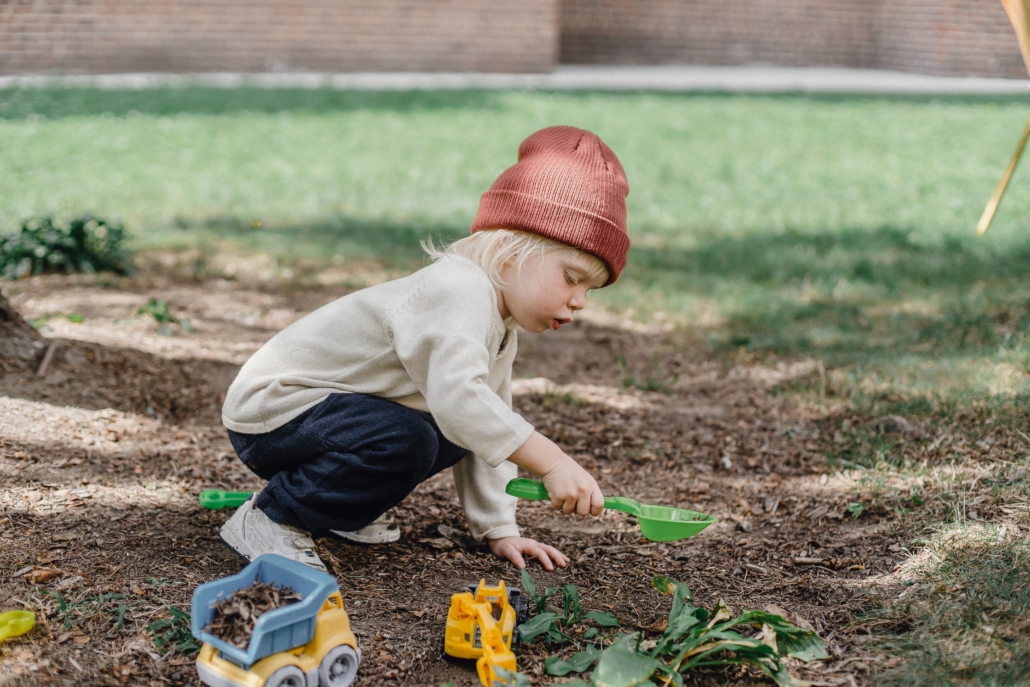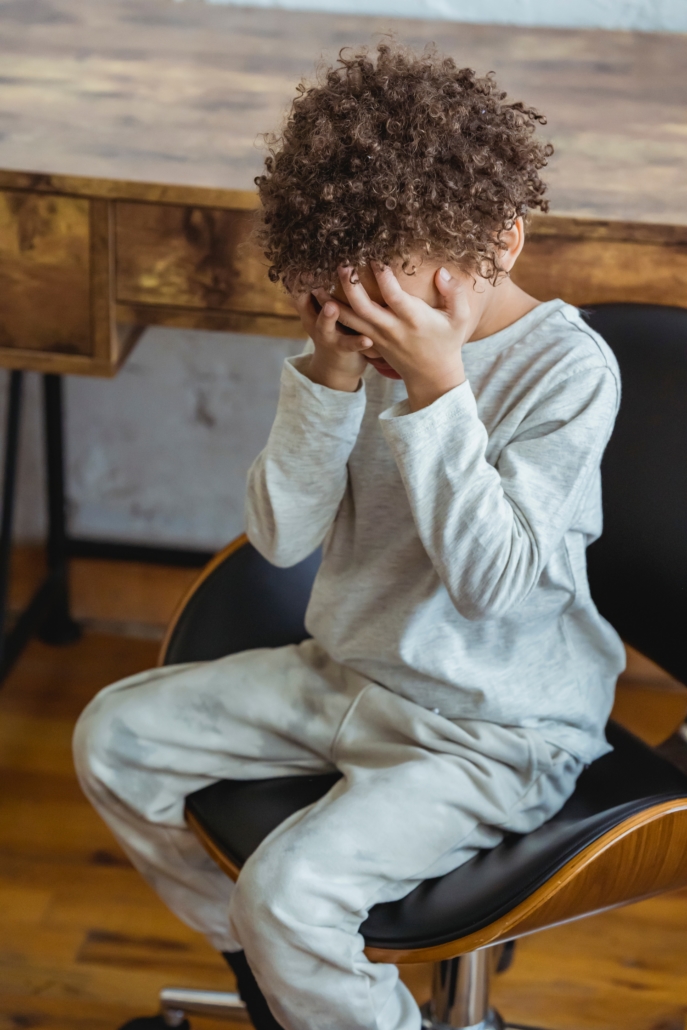

- Call 908 543 4390
- Email
- Dr.Joni Redlich PT,DPT



There is so much nature and wonder to experience in a garden. Here in the KidPT garden, we invite your kids to participate in shoveling the soil, transferring dirt with a wheelbarrow, jumping over the rows of vegetables, imagining they are earthworms tilling the soil, shading the garden as nearby trees, and invading the garden as clever rabbits.


Have your child assume the wheelbarrow position by pushing up through their hands on the ground and have a sibling or friend hold them at their knees. The child on the ground will walk forward on their hands while the other child follows them supporting their lower body in the air. Then have them switch roles. If the child’s back is arched (aka the stomach is dipping downwards towards the floor and is lower than the chest and ankles), make it easier by holding them closer to their trunk until they can keep their back straight. Too easy? Hold the child further from the trunk and as close to the ankles as they will tolerate.

Line up pillows or rolled up towels on the ground and have your child jump over them. Have them name the row of vegetables that they are jumping over as they jump. Switch it up by having them jump sideways and backwards too.

Start in a standing position and have your child slowly lower their hands down to the ground in front of their feet. Then walk their hands forward as far as they can with their feet planted on the ground. Then walk their feet up towards their hands. Repeat as they squirm their way across the room.

Have your child stand on one leg and rest their other leg’s foot on their inner thigh. Once they gain their balance in this position, have them wave their arms in the wind just like a tree. Who can make a tree with the largest branches? Too hard? Instead, have your child place one foot on a step that is in front of them.

Set up the imaginary fence by extending a long piece of tape or string from one kitchen table leg to another ( or any stable surface) at about a foot height off the ground. Then have the kids take time to army crawl under the imaginary fence to the garden.
What are your family’s favorite garden activities and plants to grow?

May is Arthritis month! Why are we talking about Arthritis? Well, it’s not a diagnosis that only affects adults, it affects kids too. Juvenile Idiopathic Arthritis is a diagnosis that affects kids of many ages, both young kids and older teens too. Unfortunately, Juvenile Idiopathic Arthritis (JIA) is sometimes passed off as “growing pains” by some medical professionals when a child complains of joint pain. This is seen to happen more frequently with older children or young teens complaining of joint pain because at this time in their lives, they are going through large periods of growth and physical development. Sometimes it is just growing pains, but sometimes it might not be! We wanted to give parents and therapists a guide so that you can recognize when signs and symptoms of JIA might be present and know who to seek out for help if you think your child might be showing some signs and symptoms of JIA.
JIA (also known as Juvenile Rheumatoid Arthritis), causes joint stiffness and joint swelling, also known as inflammation. JIA affects one or more joints for at least 6 weeks or more in children who are 16 years old or younger. JIA is different from Adult Rheumatoid Arthritis, because symptoms can decrease or go away completely as they get older BUT it can affect how a child’s bones develop as they grow.
JIA is an autoimmune disease. An autoimmune disease can occur when the body’s immune system becomes overactive and begins to attack its own healthy tissue. In JIA, the primary tissues that are affected are bone and cartilage around the child’s joints. When this begins to happen, it can happen chronically or episodically. If a child’s JIA symptoms are chronic, they have them most to all of the time where as if they are episodic, they may go through flare ups where their symptoms get worse and then have periods where they have no symptoms at all.
Children with JIA primarily have symptoms related to their joints like swelling, stiffness, and pain. The joints that are most commonly affected are the knees, hands, feet, ankles, shoulders, and elbows, but the spine and hips can also be involved. Pain and swelling are often at their worst in the morning or after a nap. Children can also have decreased appetite, poor weight gain, slow growth, eye inflammation, and fatigue. In systemic JIA, children can also present with a high fever, rashing, and swollen lymph nodes. The tricky thing is that some of these symptoms can seem like other illnesses or health conditions so it is important to make sure your child is seen by their primary doctor and a rheumatologist for appropriate diagnosis.
Yes, They absolutely do! Physical Therapy is essential for kids with JIA to help preserve joint function and to help strengthen the body to better support the joints. When a child has JIA, strengthening has to be done carefully so to not overstress the joints, and PTs have the expertise to help guide you and your child away from activities and sports that may be harmful for your child’s joints and toward more helpful activities. In acute phases of JIA, when your child is exhibiting a flare up of their symptoms, PT helps to maintain their joint range of motion, prevents muscles from getting too weak, and helps protect their bones from getting weak too. When your child is not experiencing a flare up of pain and stiffness, PT will help improve your child’s gross motor skills, especially ones that may have been limited due to their pain and decreased range of motion, so that they play and move with more freedom and confidence. If a child has a more chronic form of JIA, physical therapy will also help to achieve new mobility goals while making sure to keep their pain levels low and to prevent increased swelling.
If your child has a diagnosis of JIA or if you think there is a possibility they may have JIA, talk to your child’s primary care doctor about whether or not they believe JIA is a possibility and what your next steps should be. If your child is experiencing joint pain, they may benefit from physical therapy for all the reasons discussed above and more. Our therapists at KidPT can help give you more information and can take a look at your child to see if physical therapy would be an appropriate next step to help their body grow and develop in the healthiest way possible!
If you want to learn more about the different types of JIA, the process for diagnosis for JIA, and more, click to read the article below:
References:

Happy Mother’s day to all our moms. Today we celebrate the unmatched and superhuman strength of mothers. Motherhood comes in many forms from biological to adoptive to a grandparent caregiver to legal guardian to working mom to stay at home mom to single mom to military mom and so much more.
Every mother is different and has their own strengths and weaknesses, but we want to applaud you and encourage you for all you do.
Raising a child is the most vulnerable, life-giving, exhausting, and worry-filled adventure we can go on. From the extreme highs to the devastating lows, it can feel indescribable. But our legacies are the children we love and support so that they can live a life of joy and meaning.
On this Mother’s Day we are celebrating a few of the many strengths of moms. Today is a day to just honor and acknowledge who you are day in and out. No need for tips, tricks, or advice today as you are enough, mom.
Emotional Strength
You deserve to be applauded for the emotional weight you carry in your home. It can be hard to be the emotional reservoir for an entire family. It can seem that you are always worrying about something as a mom whether it’s managing their schedule, academics, nutrition, health care, transportation, sleep, etc. Sometimes the constant thoughts and the emotional weight can take a toll on you and all you can do is just sit on the couch in mental exhaustion. This is no sign of weakness when you consider the strength and endurance it requires to constantly carry and nurture your family’s needs.
Physical strength
The physical strength needed to be a mother is nothing short of extraordinary. From the physical expense of carrying a child in the womb and the physical changes that your body undergoes while nurturing your baby’s life to the physical demands of carrying, bathing, cleaning, feeding your child and managing your household. Sleep often becomes a long lost friend from sleepless nights caring for your infant to catching up on “me time” or other tasks while the kids are in bed. There is nothing like the physical strength of a mother to overcome these hurdles in order to provide for the needs of herself and her family.
Resilience
Every day comes with its own journey, victories and disappointments. Parenting is a marathon and it may feel hard to see the progress of your parenting each day. Despite this, you push on and do your best to remain hopeful and engaged. It may seem the values you are trying to teach your children are not taking root and that your efforts are ineffective. But how sweet it tastes when you are awarded little glimpses of your children practicing strategies that you have been intentionally trying to instill in them, whether it’s noticing their kindness in how they treat others or signs of their developing bravery, emotional intelligence, and self regulation. You are resilient and your children will learn to be resilient through your example. Don’t underestimate the moments when you help them conquer their fears and how you make them feel heard and understood when they are struggling. It’s all too common for mothers to look around and convince themselves that everyone else is doing life better and that other mothers always do the right thing. It’s normal to have these feelings and doubts and to perceive that your world is in chaos. It is hard to figure out which route or philosophy to take with parenting and it is easy to feel overwhelmed. Despite this negative self talk, things are going better than you imagine and your kids are thriving from your strength and resilience.
From our families to yours, we hope this Mother’s Day you feel seen, affirmed, and loved.
